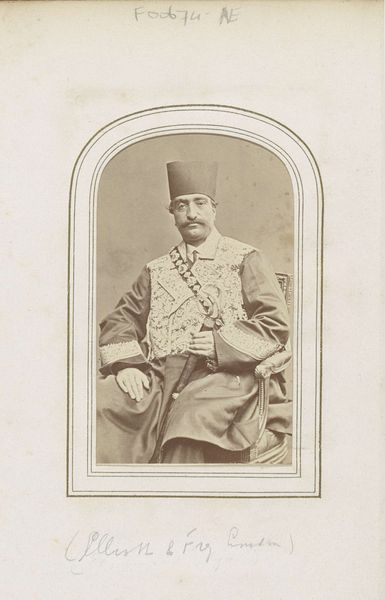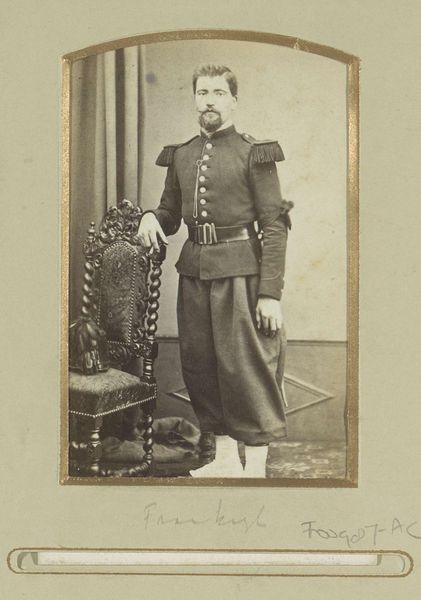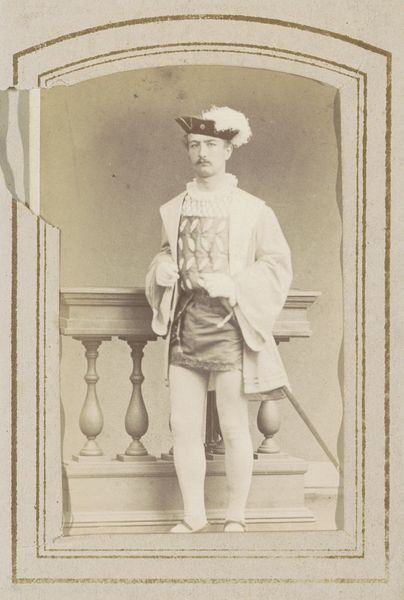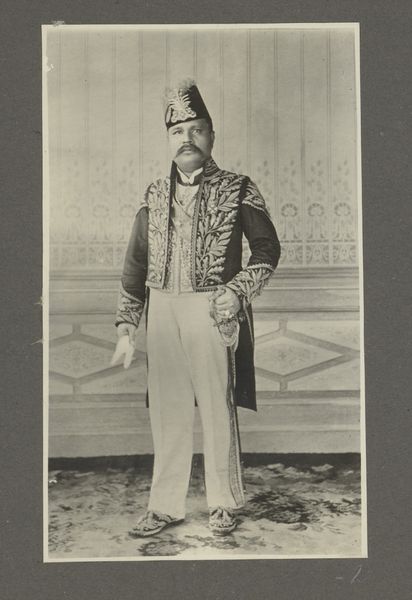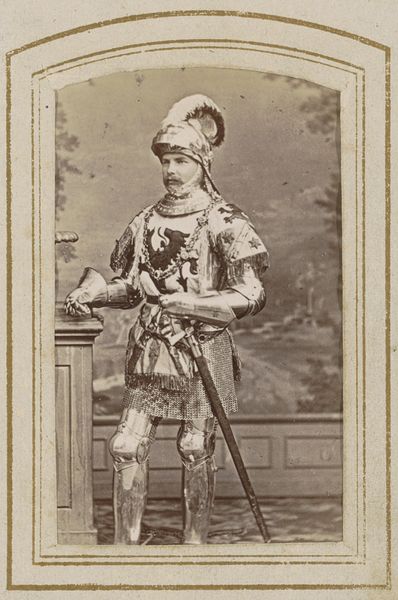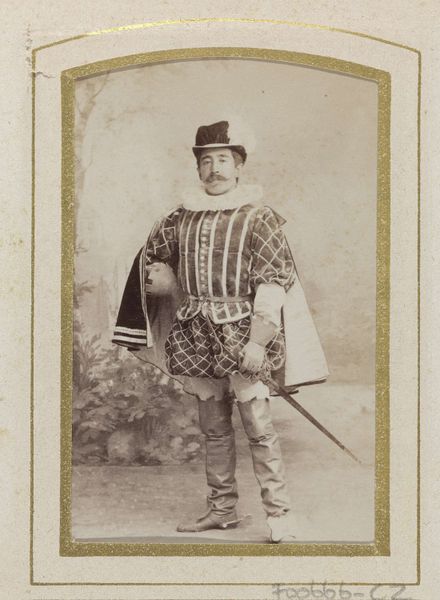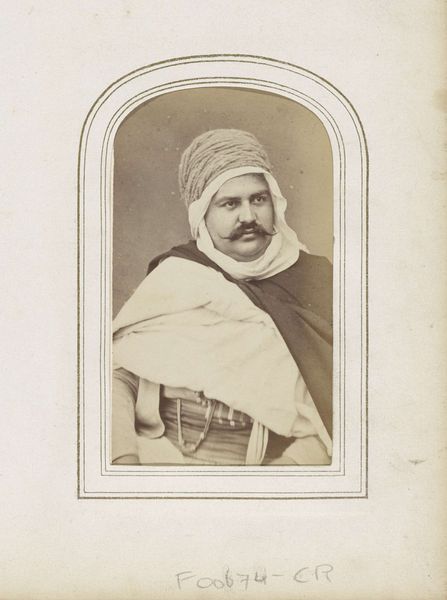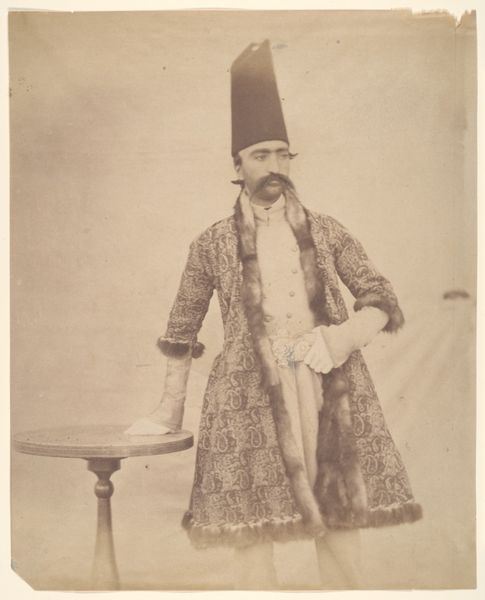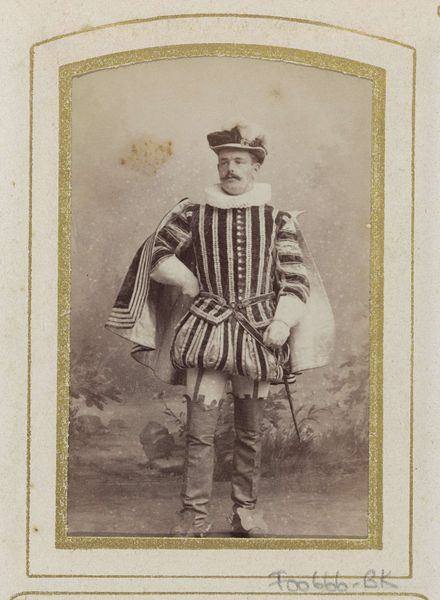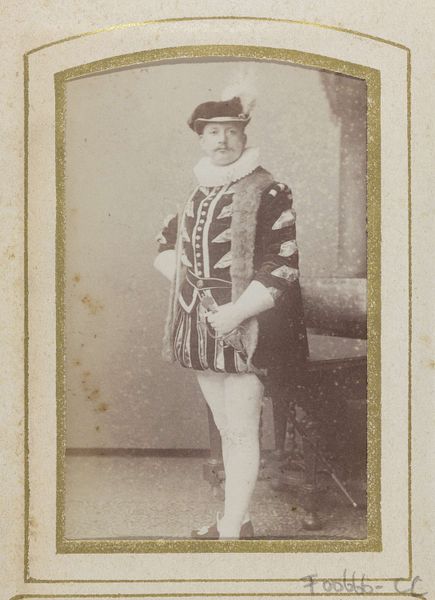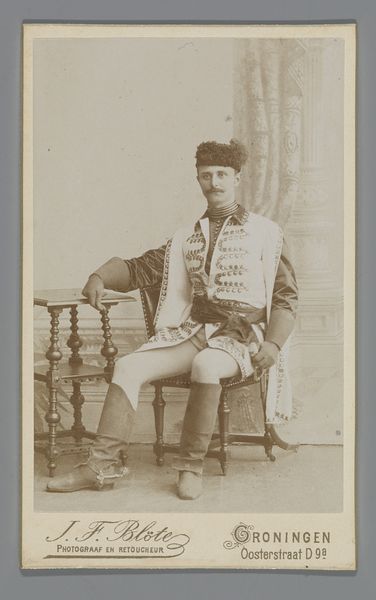
Dimensions: height 103 mm, width 61 mm
Copyright: Rijks Museum: Open Domain
Editor: This is a fascinating daguerreotype, dating from somewhere between 1860 and 1890. It’s titled "Portret van een (vermoedelijk) oosterse militair, staand," which translates to "Portrait of a (Presumed) Eastern Military Man, Standing." The man's clothing and proud stance give a striking impression. What do you see in this photograph? Curator: Immediately, I'm struck by the rich tapestry of cultural signifiers embedded in this portrait. Look at the details - the bandolier across his chest, the kindjal at his waist, the cut of his coat. These are not merely articles of clothing; they're symbols carrying immense weight. Consider the cultural memory associated with the Caucasus during this period - a region of conflict and romantic fascination for the West. Does this inform your understanding? Editor: It does. The photograph almost feels staged, less about reality and more about romanticized impressions of the “Orient.” Curator: Exactly! The very act of him being photographed suggests a certain performance of identity, a construction of otherness viewed through a Western lens. He’s posed against what appears to be a faux backdrop of classical architecture. Notice how even the drape, which seems European in origin, adds another layer of staged representation, placing him in dialogue with an imagined, perhaps idealized, Orient. Do you think that helps you see him as a set of coded ideas about identity? Editor: Absolutely. It seems the photograph captures an invented narrative just as much as it does a real person. It's almost like cultural appropriation made visual. Curator: Indeed, and this allows the portrait to participate in much wider conversation about the era’s attitude to questions of place and identity. Understanding that helps reveal so much more about what's really being communicated beyond this man's surface appearance. Editor: That makes so much sense. I was focused on him as an individual but seeing how the photograph constructs him culturally is much more revealing.
Comments
No comments
Be the first to comment and join the conversation on the ultimate creative platform.
